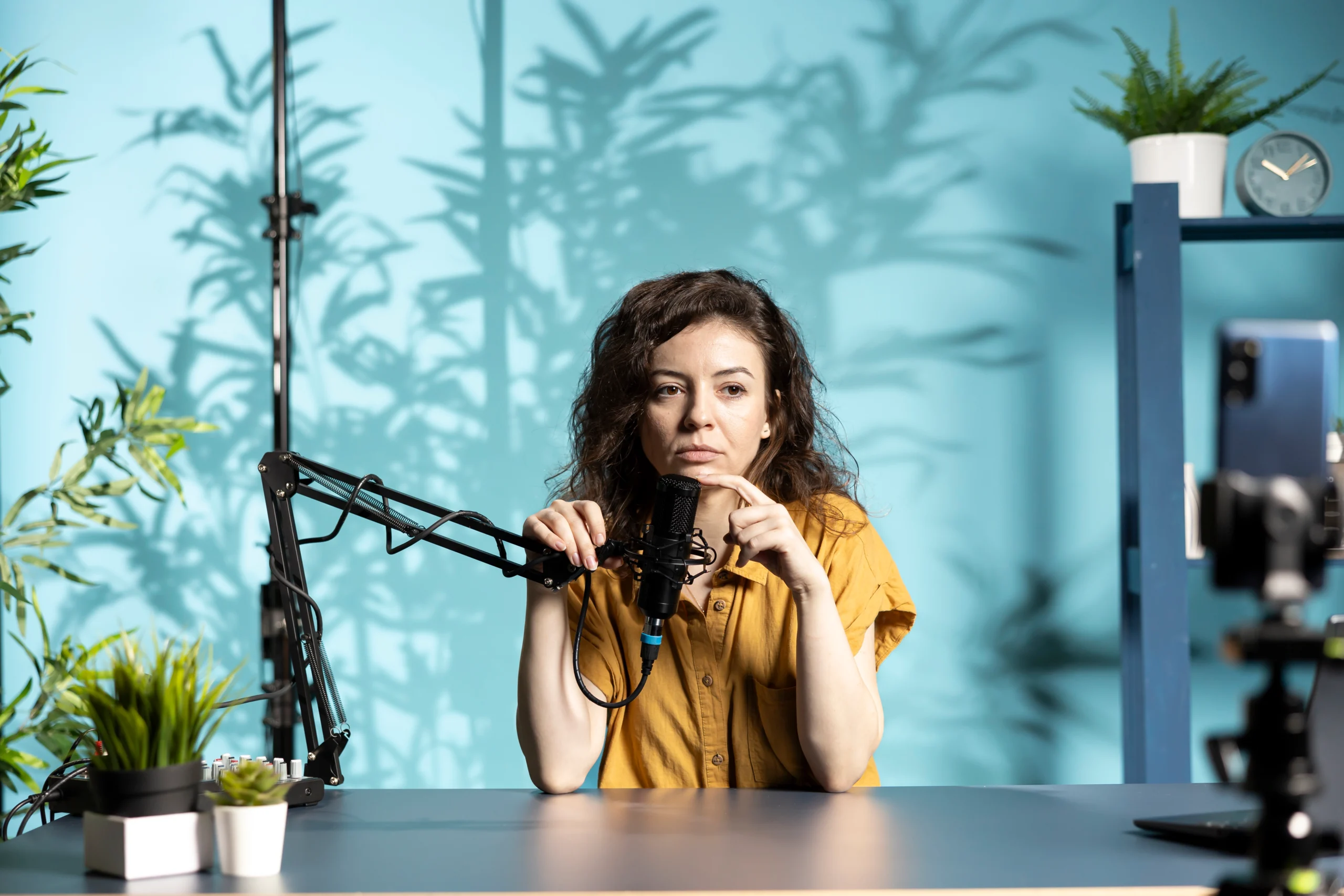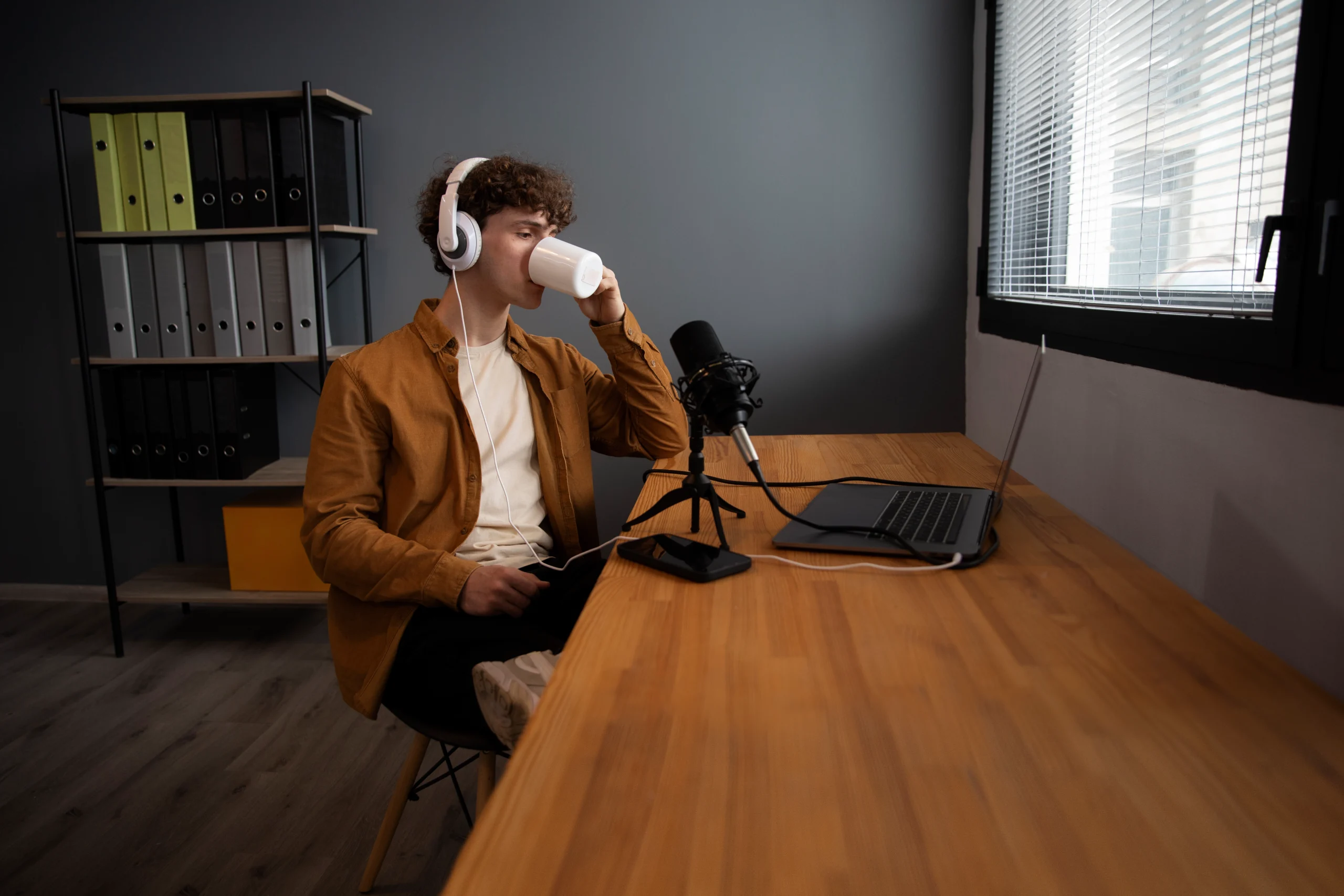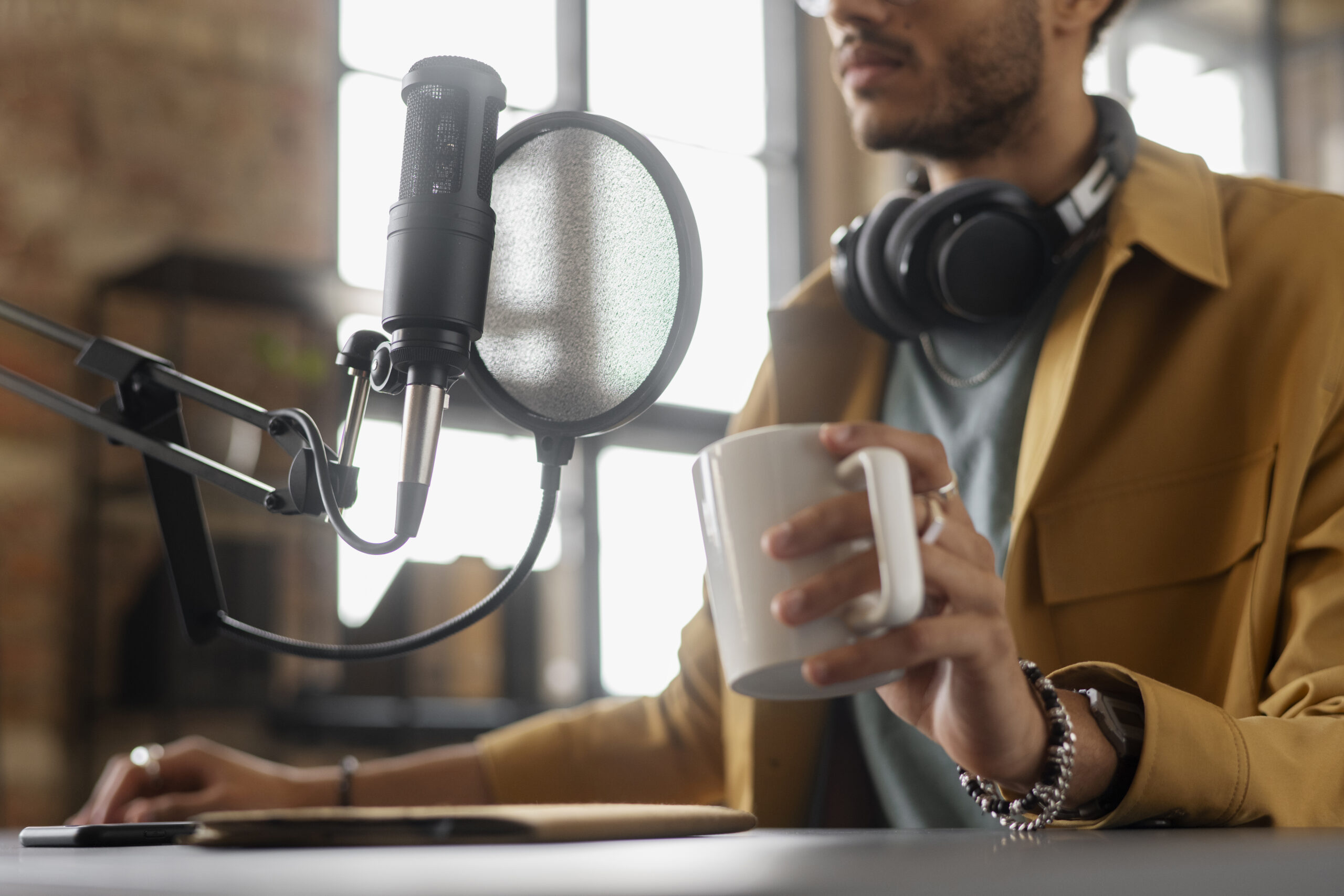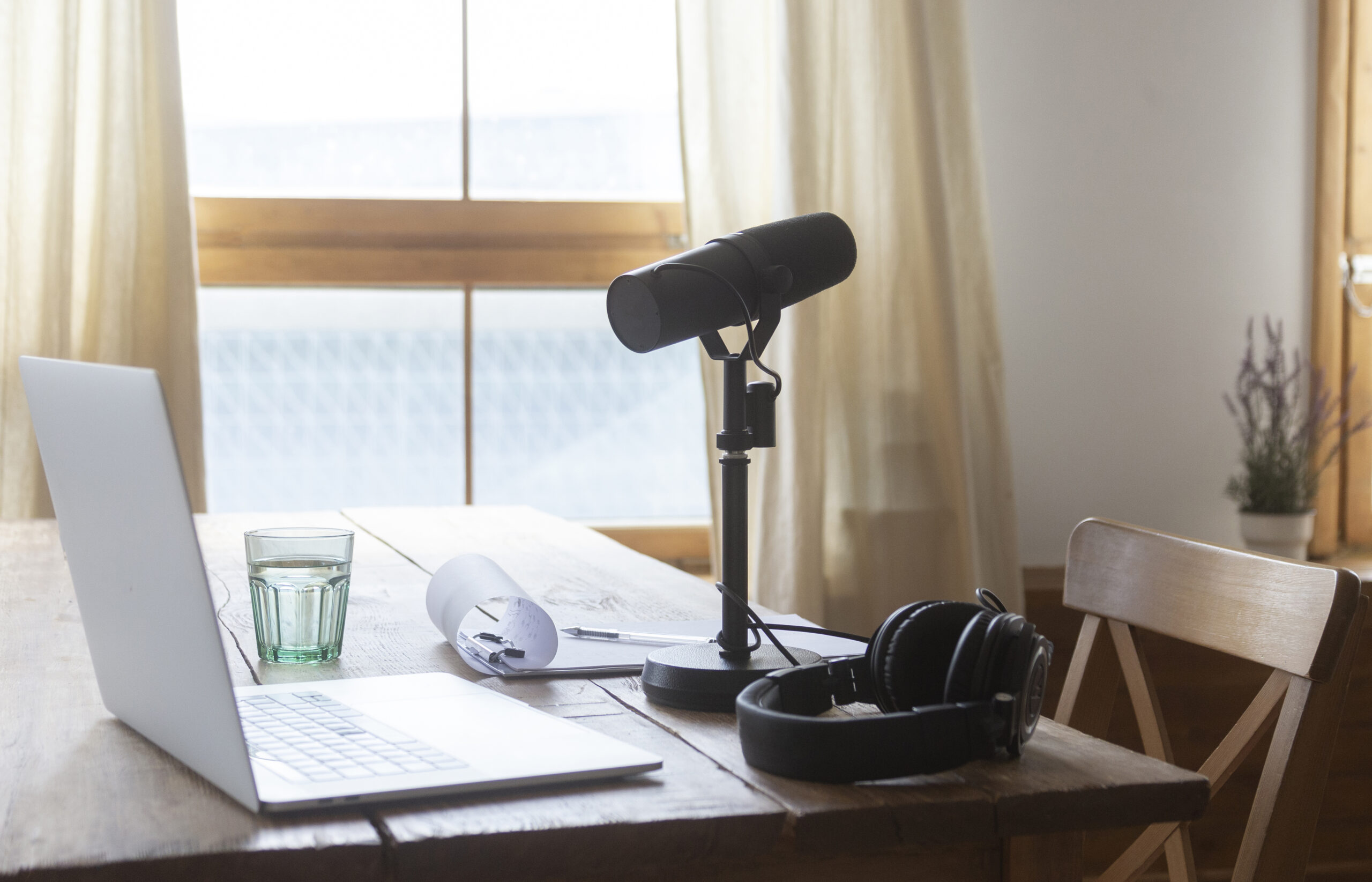Choosing the best microphone for audiobook recording is crucial for delivering clear, professional quality audio that captivates listeners. Whether you’re an aspiring narrator or a seasoned voice artist, investing in the right microphone can elevate your recordings, ensuring every word sounds crisp and engaging.
In this guide, we’ll explore top microphone options that excel in clarity, noise reduction, and ease of use, helping you create exceptional audiobook content with confidence.
Best Microphone for Audiobook Recording: Achieve Professional Sound Quality
The best microphone for audiobook recording is one that delivers clear, rich, and natural sound while minimizing background noise. For audiobook narrators, voice actors, and podcasters, choosing the right microphone is essential for producing high quality audio that keeps listeners engaged.
Popular options include condenser microphones with cardioid polar patterns, known for capturing detailed vocals with minimal room interference. USB microphones are ideal for beginners, while XLR microphones offer enhanced control for professional setups. Ensuring proper microphone positioning, pop filters, and soundproofing can further improve your audiobook recording quality.
Why Choosing the Right Microphone Matters
Selecting the best microphone for audiobook recording directly impacts your audio’s clarity, depth, and overall production value. Audiobook listeners expect smooth, distraction free narration, making it essential to invest in a microphone that captures your voice naturally.
Microphones with low self noise levels, wide frequency response, and high sensitivity are ideal for recording every vocal detail.
Types of Microphones for Audiobook Recording
When searching for the best microphone for audiobook recording, you’ll encounter two main types:
- USB Microphones: These are plug and play devices, perfect for beginners and home studios. Popular models like the Blue Yeti or Rode NT USB offer excellent sound quality without requiring complex equipment.
- XLR Microphones: Designed for professional setups, XLR microphones like the Audio Technica AT2020 or Shure SM7B provide superior sound depth and control. They require an audio interface or mixer but deliver unmatched vocal clarity.
Key Features to Look for in a Microphone
To find the best microphone for audiobook recording, focus on these essential features:
- Polar Pattern: A cardioid polar pattern is ideal for reducing background noise and focusing on your voice.
- Frequency Response: A range of 20Hz to 20kHz ensures your microphone captures both low and high vocal tones accurately.
- Low Self Noise: Microphones with minimal internal noise provide cleaner recordings, especially in quiet environments.
- Pop Filter and Shock Mount: These accessories reduce plosive sounds (like ‘P’ and ‘B’ noises) and vibrations, ensuring smooth audio.
Best Microphone Recommendations for Audiobook Recording
Here are some top performing microphones widely recommended for audiobook narration:
- Blue Yeti USB Microphone: Great for beginners with easy setup and crisp sound quality.
- Rode NT USB: Excellent choice for clear vocals and user friendly operation.
- Audio Technica AT2020: Ideal for professional voice recording with impressive sound clarity.
- Shure SM7B: A premium microphone known for its rich, warm tones perfect for audiobook recording.
Why Choosing the Right Microphone is Important for Audiobook Recording
Impact on Audio Quality and Listener Experience
When selecting the best microphone for audiobook recording, the quality of the audio is paramount. A high quality microphone directly impacts the listener’s experience by capturing every detail of your voice. It ensures clarity, making your narration sound professional and engaging.
Role of Microphone Sensitivity in Capturing Vocal Nuances
Microphone sensitivity plays a crucial role in this process. The right sensitivity can capture even the most subtle vocal nuances, giving your audiobook a natural and lifelike sound. This is especially important for maintaining a connection with your audience, as slight shifts in tone and emotion need to be heard clearly.
Avoiding Background Noise and Distortion for Smooth Narration
Another critical factor is reducing background noise. The best microphone for audiobook recording minimizes unwanted sounds, ensuring your voice is the focus. It eliminates distractions, like hums or static, creating a smooth listening experience.
Ensuring Consistent Sound Levels Throughout Recording Sessions
Finally, consistency is key. A good microphone ensures stable sound levels throughout your recording session. No sudden dips or spikes in volume just clear, even audio from start to finish. This consistency is essential for professional quality audiobooks that listeners can enjoy without interruptions.
Key Features to Look for in the Best Microphone for Audiobook Recording
When choosing the best microphone for audiobook recording, it’s essential to focus on features that enhance both sound quality and ease of use. Here are the key features to look for:
1. Polar Pattern:
For optimal sound capture, the polar pattern is crucial. A cardioid pattern is ideal for focused sound pickup, ensuring your voice remains clear and prominent. If you plan to record in multi speaker setups, an omnidirectional pattern will pick up sound from all directions, allowing for natural group recording.
2. Frequency Response:
The frequency response is vital in capturing your voice’s full depth. Look for a range between 20Hz to 20kHz, which ensures your microphone captures low, rich tones as well as the high pitched frequencies for a detailed, lifelike recording. This range is perfect for audiobooks, where clarity and warmth are key.
3. Self Noise Level:
Low self noise is essential for clean, professional sound. The best microphones for audiobook recording feature minimal self noise, ensuring that background hiss or hum doesn’t interfere with the clarity of your narration. This is especially important when recording in a quiet space.
4. Connectivity Options:
Choose between USB microphones for simple plug and play convenience or XLR microphones for professional grade control. USB microphones are perfect for home studios and beginners, while XLR microphones provide more control over your sound, making them ideal for advanced users.
5. Durability and Build Quality:
A shock resistant design is a must to prevent vibrations from affecting your recording. The best microphones for audiobook recording are built to withstand the rigors of frequent use, offering long lasting performance without sacrificing sound quality.
6. Portability and Setup Convenience:
For audiobooks recorded on the go, compact designs are essential. The best microphones for audiobook recording should be easy to transport and set up, whether you’re working in a home studio or recording in different locations. Look for lightweight, portable options that don’t compromise on performance.
Best Microphone for Audiobook Recording: A Guide to Choosing the Right One
When selecting the best microphone for audiobook recording, it’s important to understand the different types available. Whether you’re a beginner or a seasoned professional, the right microphone can make a huge difference in the quality of your audiobook recordings.
USB Microphones (Ideal for Beginners)
For those just starting, USB microphones are a convenient and budget friendly option. They are plug and play, making setup easy without the need for extra equipment.
Some popular models include the Blue Yeti, Rode NT USB, and Samson Q2U. These microphones offer a great balance of sound quality and ease of use, making them perfect for beginners who want high quality recordings without complexity.
XLR Microphones (Professional Grade Options)
For professional grade audio, XLR microphones are the go to choice. These microphones provide superior sound quality and can handle various recording environments.
Popular models like the Audio Technica AT2020, Shure SM7B, and Rode NT1 offer exceptional clarity and are perfect for audiobooks that require rich, detailed vocal recording. XLR mics generally require an audio interface but are ideal for achieving a polished, studio quality sound.
Dynamic vs. Condenser Microphones
Choosing between dynamic and condenser microphones is crucial for the sound quality of your audiobook. Dynamic microphones like the Shure SM7B are excellent for controlling background noise, making them ideal for untreated or noisy rooms.
On the other hand, condenser microphones such as the Rode NT1 are perfect for capturing detailed and crisp vocals. These mics are sensitive and ideal for a controlled environment where clarity and precision matter.
When selecting the best microphone for audiobook recording, consider the environment in which you’ll be recording, your budget, and the level of sound detail you need. Both USB and XLR microphones offer unique benefits, but the choice between dynamic and condenser microphones should be based on whether noise control or vocal clarity is your priority.
Best Microphone for Audiobook Recording: A Comprehensive Guide for All Levels
When it comes to best microphone for audiobook recording, choosing the right one can make all the difference. Whether you’re a beginner or a seasoned professional, the right microphone ensures crystal clear sound and enhances your overall recording experience. Let’s explore the top options based on your experience level.
For Beginners (Affordable & Easy Setup)
If you’re just starting, you want a microphone that offers ease of use without compromising quality. The Blue Yeti USB Microphone is an excellent choice for beginners. It connects directly to your computer via USB, so no additional audio interface is required.
It’s a versatile, plug and play option perfect for audiobook recording. Another great option is the Rode NT USB, known for its excellent sound quality and simple setup. Both microphones provide clear audio and are highly recommended for new audiobook narrators.
For Intermediate Users (Improved Sound Quality)
Once you’re comfortable and ready to upgrade, the Audio Technica AT2020 offers a step up in sound quality. This cardioid condenser microphone provides natural, full range sound, which is perfect for professional audiobook narration.
Another excellent choice is the Rode NT1 A, widely recognized for its ultra low self noise and clear sound capture. This microphone is designed for users who want a balance between affordability and high quality performance in their audiobook recordings.
For Professionals (High End Sound Precision)
For audiophiles and professionals, achieving the highest sound precision is essential. The Shure SM7B is a top tier dynamic microphone known for its exceptional sound capture and noise rejection. It’s a go to for professional audiobook recording studios.
The Neumann TLM 103 is another premium microphone that offers impeccable clarity and depth. It’s widely used by professional voice over artists and audiobook narrators looking to capture the finest details in their recordings.
Essential Accessories for Enhanced Audiobook Recording
When recording an audiobook, choosing the best microphone for audiobook recording is just the beginning. Several key accessories can elevate your audio quality. Here are the must have tools for achieving professional grade sound.
Pop Filter: To Reduce Plosive Sounds
A pop filter is essential for reducing plosive sounds, such as “P” and “B” noises, which can cause distortion. It ensures your audio remains clean and free from unwanted bursts of air.
Shock Mount: For Vibration Control
The shock mount is a critical accessory that prevents vibrations from traveling up the microphone stand. This ensures that any external noises, such as tapping or bumps, won’t interfere with your recording.
Boom Arm or Mic Stand: For Stable Microphone Positioning
A boom arm or mic stand offers stability and precision in microphone placement. It helps you position the microphone comfortably and securely, allowing for long recording sessions without fatigue.
Acoustic Treatment: Soundproof Panels or Foam for Noise Isolation
To achieve clear, high quality recordings, acoustic treatment is vital. Using soundproof panels or foam helps minimize background noise and echoes, giving your audiobook a clean, professional sound.
Audio Interface: For XLR Microphone Connections
An audio interface is necessary for connecting your XLR microphone to your recording setup. It ensures high quality sound transmission, enhancing the overall clarity and fidelity of your audiobook recording.
Setup Tips for the Best Audiobook Recording Quality
Choosing a Quiet Room with Minimal Echo
When recording an audiobook, selecting the right space is crucial. Opt for a quiet room with soft materials like carpets and curtains to reduce sound reflections. A soundproof room is ideal, but if that’s not an option, make sure the room has as little background noise as possible to ensure the best quality recording.
Proper Microphone Positioning for Clear Voice Capture
To capture your voice clearly, microphone positioning is key. Place the microphone around 6–8 inches from your mouth, angled slightly to avoid direct breath noise. Consider using a pop filter to reduce harsh sounds and maintain vocal clarity. This ensures that your recording is free from unwanted noises.
Adjusting Gain Settings for Optimal Sound Levels
Gain settings directly affect how your voice is captured. Too high, and your voice may distort; too low, and it might be hard to hear. Adjust the gain to ensure your sound levels are consistent and clear throughout the recording. Aim for a balanced, distortion free recording.
Using Recording Software with Noise Reduction Tools
Utilizing recording software with noise reduction tools is a game changer. Most modern recording software comes equipped with features to reduce background noise and enhance the quality of your voice. Tools like noise gates and EQ settings can further improve the clarity of your recording, ensuring that it sounds as professional as possible.
Common Mistakes to Avoid in Audiobook Recording: Best Microphone for Audiobook Recording
When recording an audiobook, choosing the best microphone for audiobook recording is essential. However, several common mistakes can hinder the quality of your audio. Let’s explore these errors and how to avoid them:
1. Using Low Quality Microphones That Distort Audio
Low quality microphones can easily distort your voice, resulting in poor sound quality. Always opt for a best microphone for audiobook recording to ensure clear, crisp audio that enhances the listening experience.
2. Ignoring Room Acoustics and Soundproofing
Room acoustics have a significant impact on your recording quality. If you don’t soundproof your space, unwanted noises can interfere with your audiobook. Consider adding acoustic panels or foam to reduce echoes and external distractions for the best recording environment.
3. Incorrect Microphone Placement Causing Volume Imbalances
Proper microphone placement is key to achieving balanced sound levels. If you position your microphone too close or too far from your mouth, the audio can sound uneven. Keep a consistent distance from the mic for optimal sound clarity and volume consistency.
4. Overlooking the Importance of Post Production Editing
Post production editing is where the magic happens. Even with the best microphone for audiobook recording, you’ll need to clean up background noise, fix volume inconsistencies, and ensure a polished final product. Don’t skip this crucial step if you want to produce a professional audiobook.
By avoiding these common mistakes, you can improve your audiobook recording quality and create a more engaging experience for your listeners.
FAQs:
Q1: What is the best microphone for audiobook recording for beginners?
For beginners, the best microphone for audiobook recording is a USB microphone due to its easy setup and plug and play functionality. Popular options include the Blue Yeti, Rode NT USB, and Samson Q2U. These microphones deliver clear vocal quality without requiring complex audio equipment.
Q2: What features should I look for in the best microphone for audiobook recording?
When choosing the best microphone for audiobook recording, focus on these key features:
- Cardioid Polar Pattern for reducing background noise
- Wide Frequency Response (20Hz to 20kHz) to capture vocal depth
- Low Self Noise for cleaner audio
- USB or XLR Connectivity depending on your recording setup
Q3: Are USB microphones good enough for audiobook recording?
Yes, USB microphones are an excellent choice for beginners and even intermediate audiobook narrators. Models like the Rode NT USB and Blue Yeti offer impressive sound quality, making them some of the best microphones for audiobook recording without the need for additional audio interfaces.
Q4: Which is better for audiobook recording: USB or XLR microphones?
- USB Microphones are ideal for simple plug and play setups, perfect for beginners.
- XLR Microphones provide superior sound quality and greater control, making them the best microphones for audiobook recording in professional settings. Examples include the Shure SM7B and Audio Technica AT2020.
Q5: What type of microphone is best for audiobook recording in a noisy environment?
For noisy environments, a dynamic microphone with a cardioid polar pattern is ideal. Models like the Shure SM58 or Rode PodMic excel at isolating vocals while minimizing background noise.
Q6: How can I improve the sound quality of my audiobook recordings?
To enhance audio quality with the best microphone for audiobook recording, follow these tips:
- Use a pop filter to reduce plosive sounds
- Position the microphone 6 to 12 inches from your mouth
- Record in a quiet, treated room to minimize echo and background noise
- Invest in a shock mount to prevent vibrations
Q7: What is the best budget microphone for audiobook recording?
For budget conscious users, the Samson Q2U and Audio Technica ATR2100x offer exceptional sound quality at an affordable price. These models are widely regarded as some of the best microphones for audiobook recording under budget.
Q8: Can I use a headset microphone for audiobook recording?
While headset microphones are convenient, they typically lack the sound clarity and depth required for professional audiobook narration. Investing in a dedicated best microphone for audiobook recording ensures superior audio performance.
Q9: What is the ideal room setup for audiobook recording?
To achieve optimal results with the best microphone for audiobook recording, choose a small, quiet room with minimal echo. Adding acoustic foam panels, curtains, or carpets can help reduce sound reflections and improve audio clarity.
Q10: Which software works best with the best microphones for audiobook recording?
Popular audio recording software like Audacity, Adobe Audition, and Reaper work seamlessly with the best microphones for audiobook recording, providing advanced editing tools for improved sound quality.
Conclusion:
Choosing the best microphone for audiobook recording is crucial for achieving clear, professional quality audio that enhances your storytelling. Whether you’re a beginner starting with a USB microphone or an experienced narrator investing in an XLR setup, selecting the right microphone can significantly improve your recording results.
Focus on key features like a cardioid polar pattern, low self noise, and wide frequency response to capture every detail of your voice. By combining the best microphone for audiobook recording with essential accessories such as pop filters and shock mounts, you can produce engaging and immersive audiobooks that captivate your audience.





